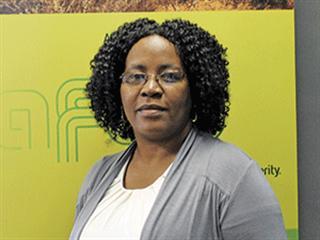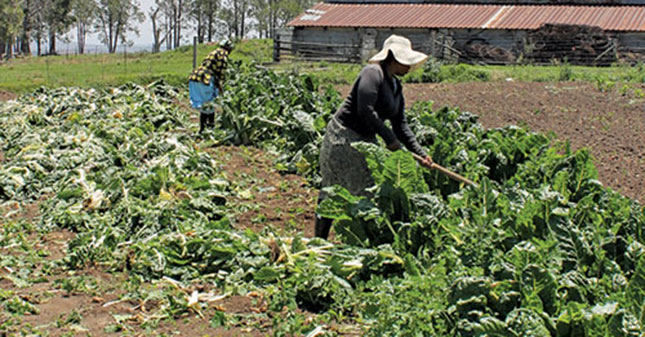
Who is AFAP, and what does it do?
AFAP – African Fertiliser and Agribusiness Partnership – was formed principally to make fertiliser accessible at an affordable price to millions of disadvantaged smallholders in Africa. In June 2006, the ministers of agriculture of the African Union met in Abuja for the Africa Fertiliser Summit. They discussed the continent’s need for a green revolution and the fact that fertiliser was crucial for this. Yet most African farmers are poor and have almost no access to fertiliser. So delegates agreed on the establishment of a development fund for fertiliser, and AFAP was finally created in 2011.
We are supported by various organisations such as the African Union through Nepad, the International Fertiliser Development Centre (IFDC), the Alliance for a Green Revolution in Africa (AGRA), African Development Bank (AFDB), and Agricultural Markets Development Trust (Agmark). We are also working with private agribusinesses. We’re not yet operating in all the countries we want to because of a lack of finances, but we have offices in Ghana (serving West Africa), Tanzania (for East Africa) and Mozambique (for Southern Africa). Our head office is in Johannesburg.
How do you plan to accomplish your goals?
AFAP offers private agribusinesses incentives and assistance as they invest in Africa’s emerging fertiliser markets. In return, these companies commit to contribute substantially to developments that will benefit both their bottom line and farming communities. Contributions could include improving infrastructure, bolstering local farm co-operatives, providing technical assistance to agro-dealer associations or offering trade credit to local retailers. All of these are aimed ultimately at boosting access, affordability and usage of fertiliser to smallholders.
AFAP also connects entrepreneurs and business leaders with development organisations that have a proven track record in helping African smallholders to source and use fertiliser. To establish these connections, we will utilise what we call the Agribusiness Partnership Contracts (APCs). These are available to eligible international, regional and local agribusinesses who want financial, technical or logistical assistance.
How do you plan to make fertiliser accessible to smallholder farmers?
Fertiliser distribution is usually handled by agribusinesses, most of which are located in towns. Very few rural smallholders have their own transport – and typically use public transport instead. How many bags of fertiliser can one carry on a bus or taxi?
To try and solve this problem, we’re working with big fertiliser producers, as well as Agmark, who are very good at developing agro-dealerships. We want to get these companies to adopt the Coca-Cola model for distribution, using spaza shops as a distribution network. You’ll find a Coca-Cola signboard in the most remote rural area, and we want to emulate this approach.
Why is there a need to increase fertiliser usage?
African smallholders are unable to produce higher yields because they are using between 5kg/ ha and 8kg/ ha – not nearly enough. Most Asian smallholders use about 120kg/ ha. In some countries such as the US, China and Japan, usage ranges from 300kg/ ha to 350kg/ ha. The Abuja declaration calls for at least 50kg/ ha.
Commercial farmers, especially in South Africa, have easy access to manufacturers or other suppliers. And because of the quantities they buy, they can easily negotiate discounts. Smallholders typically buy about 10 bags or so. What kind of discount can one negotiate with that? This is basically the problem we are trying to address.
What definition of a smallholder farmer is AFAP using to identify its beneficiaries?
About 99% of sub-Saharan farmers are smallholders. While in South Africa there isn’t a clear definition of a smallholder farmer, other countries are very clear on this. In Zambia, for example, a smallholder is someone who farms on less than 7ha, while in Malawi it is someone farming on less than 1ha. So it differs with each country. In South Africa, a smallholder is someone who farms on 50ha to 100ha or even more.
How far are you in implementing the project in SA?
We have started talks with Agmark and have done some assessment in Limpopo to start piloting the concept. The team was there in November performing fieldwork, gathering information and talking to farmers, farmers’ organisations and the provincial government. I should be getting the final report very soon and will plan accordingly.
We’ve also been talking to the Food and Agriculture Organisation’s representatives in South Africa, who are very interested in partnering with us. And I’ve had a discussion with Illovo, whose smallholder farmer projects are in the sugar industry in KwaZulu-Natal. We’re trying to see how we can ensure that these smallholders get access to fertiliser at an affordable price. We are also speaking to fertiliser companies, and they are really showing interest. Even companies outside SA are keen. One of these is Kynoch Fertiliser, which has already completed its plant in Mozambique for supplying the region.
What is the reaction from governments?
Many are more than ready to work with us, and we are currently signing MOUs with several governments. Taking part in the initiative is one way for these countries to advance programmes such as the Comprehensive Africa Agriculture Development Programme, which is all about increasing agricultural production in Africa.
Currently, we have a fertiliser programme in Ethiopia where the work we are doing is paid for by the Ethiopian government. They’ve sub-contracted us to help them restructure their fertiliser programme. Nigeria also invited us to speak to them, and we are already involved in discussions. There are nine other countries in West Africa who want us to help them with similar projects.
Which fertiliser companies are buying into the idea?
We are talking to Kynoch Fertiliser, Yara International and also several local producers. These include urea manufacturers in Nigeria – their plants are the largest of their type in Africa.
In Morocco we are talking to OCP Group, a phosphate giant that plans to establish markets in South-East Africa and West Africa. We are also in touch with major fertiliser companies in South Africa.
What is the biggest challenge facing this implementation?
In West Africa particularly, people are reluctant to use fertiliser on consumable crops as they believe it will make them ill. At AFAP we don’t promote the use of chemical fertiliser at all costs. We believe that people should have a choice of what is available and use what works for them. For example, we know of farmers who plant maize for their own use, and palm and cocoa for the market.
They do not use fertiliser on the maize because they eat it themselves, but nonetheless fertilise the other two crops. The same thing happens in East Africa with cotton and coffee farmers. In general, though, people are misinformed about fertiliser and need to be taught about its importance.
What are AFAPs long-term goals?
I’d like to give an example from Malawi. When the late President Bingu wa Mutharika started giving farmers fertiliser subsidies, there was a lot of scepticism about how effective they would be. But production improved and everyone could see the results for themselves. The intervention showed that with the right seed hybrids and fertiliser, anyone could increase their yields.
I’m not saying that everything about Malawi’s subsidies was perfect – there were questions about the processes that were followed. The important thing, though, is the outcome: giving farmers ready access to fertiliser moved Malawi from being a net importer of food to being a net exporter in just a few years. Our long-term goal is to replicate Malawi’s achievements in other African countries.
Moreover, we want this success to be repeated with seed as well as fertiliser, so we intend working with seed companies too. It is common knowledge that combining the right types of seed and good fertiliser makes a real difference. This is why seed and fertiliser companies tend to run trials together. With this combination, Africa can move away from food dependency on other continents.
Contact Cecilia Khupe on 011 844 7320 or at [email protected]













